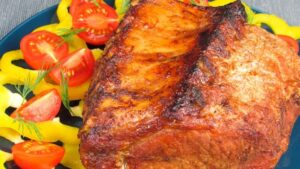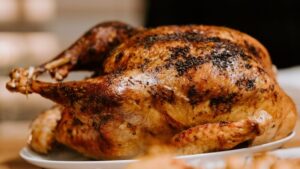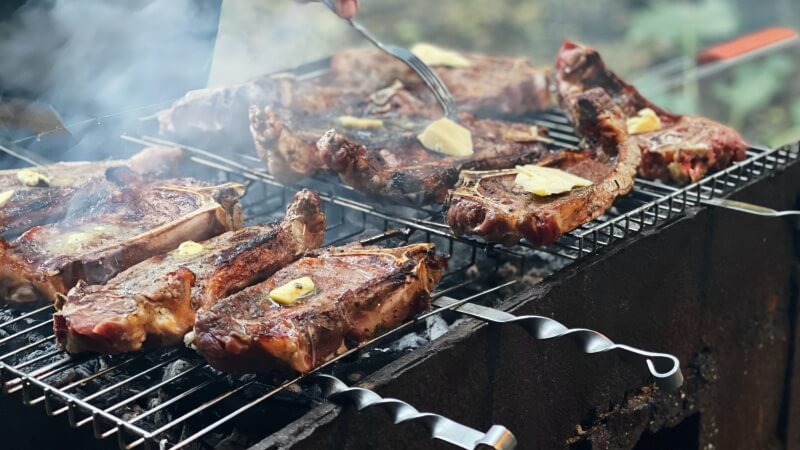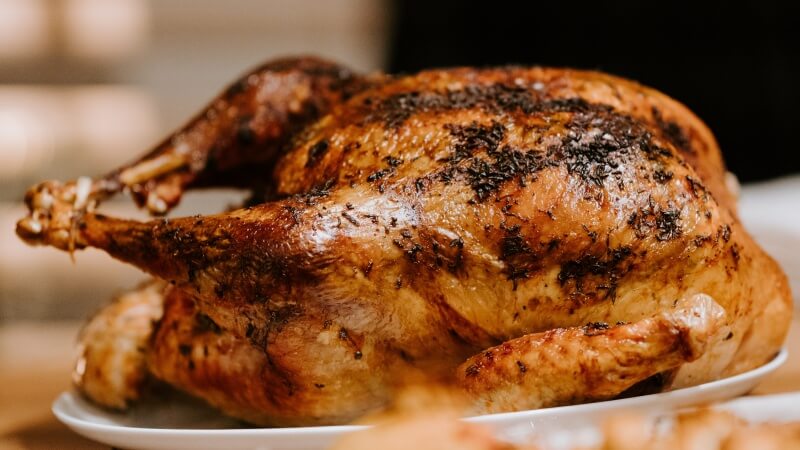
How To Enhance Your DIY Meat Probe with Voice Control Features
Every culinary enthusiast knows the importance of a perfectly cooked steak, and that’s where a meat probe comes in handy. But what if we could

A wireless meat thermometer is a handy gadget to have in your cooking arsenal, allowing you to monitor food temperatures conveniently from a distance.
However, proper usage and safety precautions are essential when dealing with raw meats to avoid foodborne illness. This guide covers key thermometer safety tips you should keep in mind.

Not all wireless thermometers are designed equally when it comes to food safety. Look for key features like:
Precision is vital to identify unsafe temperature zones. An accuracy of ±1.8°F or better ensures reliable safety.
Seek thermometers that provide readings within 2-3 seconds. Delayed response times miss safety issues.
Look for a broad temperature range such as -58–572°F to monitor both freezing and high-heat cooking.
Audible alarms that activate when preset temps are reached are handy safety backups for monitoring.
Choose thermometers tested and approved under standards like ISO or NSF International for performance assurance.
In addition to the right thermometer, proper technique is crucial for safety:
Insert the probe tip into the densest section of meat, all the way to the center where temps are coolest.
Double check temps in several spots, especially areas farthest from heat sources which warm slower.
Direct contact with bone or fat gives false high temps. Surround the probe with meat.
Insert a clean, dry probe each time for maximum sensitivity. Wet probes cause cooling through evaporation.
Give the reading 15-20 seconds to equilibrate before judging the temperature.
How you handle meat can also impact thermometer effectiveness:
Always wash hands and prep surfaces before and after contact with raw meat to prevent cross-contamination.
For frozen meats, pre-heat thermometer probe tips first under warm water so it can reach the center.
Disinfect each thermometer probe with alcohol wipes after removing it from the meat and before re-use.
Replace old probes regularly as they become worn and less accurate over time.
Never re-insert a used probe without proper cleaning as residue can spread bacteria.

Calibrate your thermometer expectations to these USDA baseline internal temperatures:
Beef, pork, lamb, and veal cuts should all reach a minimum of 145°F internally before removing from heat.
Ground meats including beef, pork, lamb, and veal should be cooked to 160°F minimum for safety given the risk of bacteria spread.
All poultry, including whole birds and cuts, should cook to 165°F minimum given heightened food safety risks.
When reheating leftovers, they must again reach safe minimum internal temperatures, so monitor diligently.
Proper resting procedures are critical for safety with carryover cooking effects:
Meat temps can rise 10°F+ after removal. Resting for at least 3 minutes allows temps to stabilize.
Double-check the temperature again after resting in case it has increased into the danger zone.
Even post-resting, meats must meet USDA minimum temperatures to be considered safe to consume.
Larger cuts require longer resting and the deepest areas may still be rising in temp after removal.
If the internal temperature is lower than the guidelines after resting, discard the meat properly rather than recooking.
Once you’ve mastered the basics, a few extra precautions can boost safety further:
The specific shape and thickness of different cuts impact thermometer placement:
Probe horizontally through the side of the steak to get to the center without hitting the pan/grill.
Monitor multiple areas around the perimeter and deep in the center, which can vary drastically.
Temp burger patties and meatloaf in the thickest area avoiding fatty pockets which conduct differently.
If arranged tightly, insert the probe into the center parallel to the skewer to avoid contact with the stick.
Check thighs for minimum temp but also probe breasts and cavities thoroughly.
Aim probe into the middle away from bone which skews readings.
For thin fillets, the probe must reach the center without protruding through the sides or touching the bone.

Inaccurate thermometer readings compromise safety. If issues arise:
Using your wireless thermometer properly is critical for protecting you and your loved ones. When in doubt, take an extra reading and confirm temps before serving.
Perfectly cooked meat is not worth the risks of foodborne illness when handling meat improperly. Master your thermometer and make safety the top priority with every use.


Every culinary enthusiast knows the importance of a perfectly cooked steak, and that’s where a meat probe comes in handy. But what if we could

When it comes to cooking perfection, a meat probe is an indispensable tool for any chef or home cook. But in the world of meat

The moment you bring a meat probe into your kitchen, it’s not just about cooking anymore; it’s about precision, about transforming an ordinary meal into

Ever questioned if a meat probe could be your secret weapon for the perfect roast chicken? It’s a culinary showdown: the precision of a meat

Every culinary enthusiast knows the importance of a perfectly cooked steak, and that’s where a meat probe comes in handy. But what if we could

When it comes to cooking perfection, a meat probe is an indispensable tool for any chef or home cook. But in the world of meat

The moment you bring a meat probe into your kitchen, it’s not just about cooking anymore; it’s about precision, about transforming an ordinary meal into

Ever questioned if a meat probe could be your secret weapon for the perfect roast chicken? It’s a culinary showdown: the precision of a meat
Copyright © 2024 meaterprobe. All Rights Reserved.